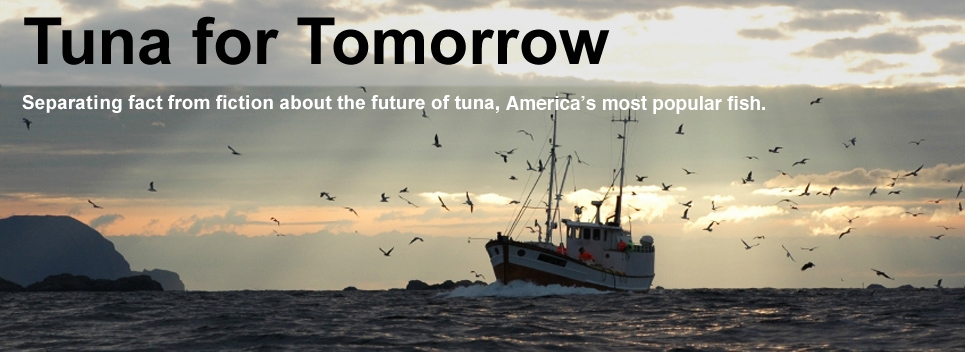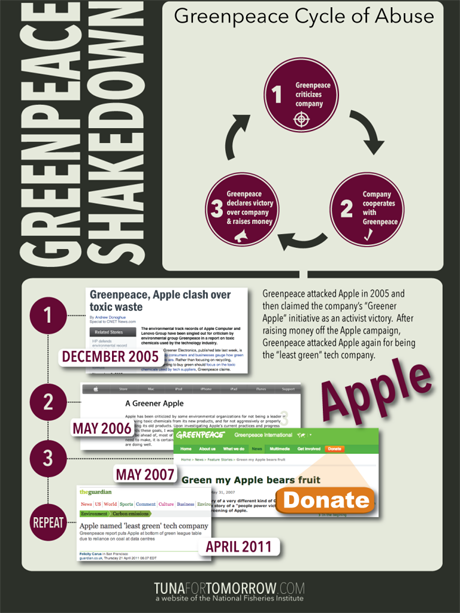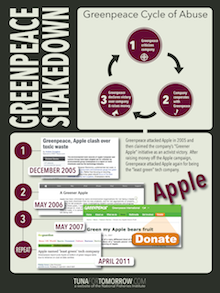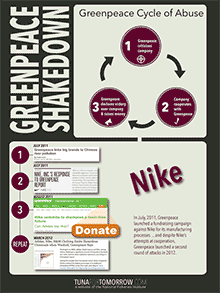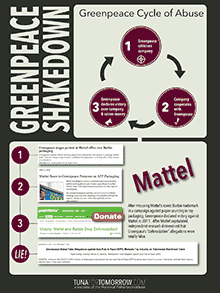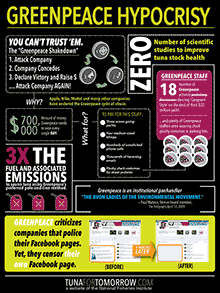Why do companies cooperate with Greenpeace? The same reason why individual donors get roped in to giving them money: they want to believe Greenpeace acts in good faith for the good of the planet. But Greenpeace only cares about the sustainability of Greenpeace. And just as individuals come to regret giving Greenpeace access to their wallets, so too do corporations regret letting activists through their front doors. Once in, they never leave. And appeasement only intensifies their attention.
Many conscientious companies in different industries have fallen prey to the Greenpeace cycle of abuse, a three-step process by which Greenpeace raises money.
- Step One: The cycle begins when Greenpeace targets a high-profile company or brand. “This company is destroying the rainforest, or the ocean, or the planet itself,” they will claim. They’ll photograph the Greenpeace blimp flying over the corporate headquarters. Activists wearing plushy costumes will coach people on the street to make harassing phone calls. And they’ll misuse trademarked images  — often in a violent context.
- Step Two: The targeted company invites Greenpeace to discuss their grievance in the hope that their disagreement is just a misunderstanding. After all, dialogue is how reasonable parties resolve their differences. But Greenpeace isn’t interested in conflict resolution. Conflict is how they make money. They’ll accept the invitation and quickly wear out their welcome.
- Step Three: With some evidence of cooperation, Greenpeace declares victory and uses the triumph to solicit donations from its mailing list of supporters and in advertising campaigns that hijack the target company’s carefully cultivated reputation.
This cycle turns out to be endless because Greenpeace will never stop pestering the target company even well after the business has yielded to the activists’ demands. The demands simply get more demanding and the cycle resumes with a new attack.
We’ve created a series of graphics that show how this cycle has ensnared some of the most savvy and successful companies.  Greenpeace, for example, attacked Apple, in 2006 on claims the company refuted. Greenpeace then took credit for the company’s own “Greener Apple” initiative that Steve Jobs launched in 2007. Posed as an activist win, Greenpeace used Apple’s initiative to raise money for its own organization. Greenpeace has not left Apple alone and has in fact stepped up the pressure in recent months with amorphous and baseless complaints that amount to nothing more than attempted extortion.
1) Attack, 2) cooperate, 3) declare victory and raise money . . . REPEAT. That’s the Greenpeace Cycle of Abuse.


